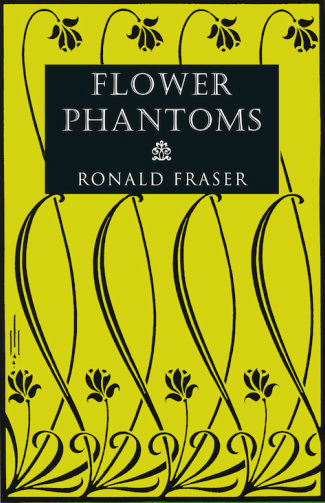|
BOOK DETAILS
Trade paper ISBN-13: 978-1939140104 List Price: $14.99 U.S. Pages: 94 Published: 2013 |
Flower Phantoms (1926)
Ronald Fraser With a new introduction by Mark Valentine Book Description
"The erotic awakening of a young woman . . . Judy, a student at Kew Gardens . . . is engaged to a personable young man who does not have the ability to arouse her, though she likes him, and she is disturbed by the utilitarian, materialistic life-philosophy of her businessman brother. She becomes more and more sensitive to the hidden life of the plants at Kew, and comes to see them as personalities, with the giant orchid in the role of passionate lover. . . . Told with delicate imagery and fine perceptions, a minor rococoism of art deco literature." - E.F. Bleiler, The Guide to Supernatural Fiction (1983) This first-ever reprinting of Flower Phantoms (1926), the best-known novel by Ronald Fraser (1888-1974), features a new introduction by Mark Valentine. |
reviews
"[P]robably the most distinguished writer of English prose in the novel form at present living. He cannot do other than write beautifully." - Humbert Wolfe
"The book abounds in glowing experiences of a world of colour and sensation, minutely imagined. . . . The description of dawn at Kew Gardens is so lovely that the reader will be tempted to endanger his respectability by emulating Judy and climbing the wall." - Times Literary Supplement
"Among the few highly important and significant novelists of the day." - The Observer
"There is poetry beneath Mr. Fraser's fantastic humour as there is a cunning grace in his prose." - The Times
"The erotic awakening of a young woman . . . Judy, a student at Kew Gardens . . . is engaged to a personable young man who does not have the ability to arouse her, though she likes him, and she is disturbed by the utilitarian, materialistic life-philosophy of her businessman brother. She becomes more and more sensitive to the hidden life of the plants at Kew, and comes to see them as personalities, with the giant orchid in the role of passionate lover. . . . Told with delicate imagery and fine perceptions, a minor rococoism of art deco literature." - E.F. Bleiler, The Guide to Supernatural Fiction (1983)
"The book abounds in glowing experiences of a world of colour and sensation, minutely imagined. . . . The description of dawn at Kew Gardens is so lovely that the reader will be tempted to endanger his respectability by emulating Judy and climbing the wall." - Times Literary Supplement
"Among the few highly important and significant novelists of the day." - The Observer
"There is poetry beneath Mr. Fraser's fantastic humour as there is a cunning grace in his prose." - The Times
"The erotic awakening of a young woman . . . Judy, a student at Kew Gardens . . . is engaged to a personable young man who does not have the ability to arouse her, though she likes him, and she is disturbed by the utilitarian, materialistic life-philosophy of her businessman brother. She becomes more and more sensitive to the hidden life of the plants at Kew, and comes to see them as personalities, with the giant orchid in the role of passionate lover. . . . Told with delicate imagery and fine perceptions, a minor rococoism of art deco literature." - E.F. Bleiler, The Guide to Supernatural Fiction (1983)
ALSO AVAILABLE THROUGH ONLINE RETAILERS
AUTHOR BIOGRAPHY

Sir Arthur Ronald Fraser was born in 1888, the fourth son of an Inverness-shire cloth merchant who had moved to London. Fraser had a conventional education at St Paul’s School, but by his early teens was writing poetry, which was published in the Westminster Gazette, much to his family’s amusement. At eighteen he was put to work in an insurance company, but in his spare time read at the British Museum; he was particularly interested in Buddhism. He served in the First World War and was in the trenches by November 1914. He was seriously wounded at the battle of Beaumont Hamel and invalided out. He made his career in the overseas section of the Department of Trade, and in the Foreign Office, serving in Argentina and France as the Commercial Minister in the British Embassies there, and later as a Government Director of the Suez Canal, when he was resident in Egypt. His knighthood in 1949 was one of several decorations in recognition of a distinguished diplomatic career. He published twenty-seven novels between 1924 and 1961 and in later life became involved in the New Age movement, running a healing and meditation centre with his partner Ingrid from a temple attached to his home. He died in 1974.

